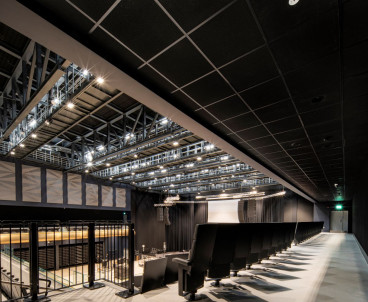Still counting the cost of devastating fire
After a devastating fire destroyed its original unsprinklered warehouse in 2021, a renowned children’s clothing brand has faced a challenging and long period of disruption, and the harsh realities of underinsurance. The loss of sales, a legal battle with their insurance broker, and additional costs to get back up and running is a sobering reminder of the time and resources it takes to recover following a fire writes Thomas Roche, Secretary of Business Sprinkler Alliance.
The fire, caused by arson in May 2021, destroyed the My 1st Years warehouse and headquarters in Northampton, resulting in £15 million in damages, including £3 million in stock loss and £1 million in equipment damage. Additionally, 1400 customers were refunded due to trading disruption.
While the business managed to secure £3 million leased premises on the Grange Hill industrial estate in order to resume operations in the aftermath of the fire, they no longer had the third party logistics provider from their previous location. That meant sourcing the necessary racking, operations and software to support the business themselves. The business faced the new challenge that when they lost their original premises, they would need to foot the cost to replicate or provide these services themselves.
While the insurers paid the claim, there was a gap in the scale of the coverage originally purchased. The business eventually won a ruling against their insurance broker to cover some of this gap, but they still faced the financial burden of fitting out their new premises in order to resume operations whilst this was going on. It is interesting to learn from the court case that the insurers of the new property have stipulated the provision of sprinklers and a planning application has been submitted to indicate that the Grange Hill warehouse will be provided with a sprinkler tank and space for a pumphouse.
Businesses should take note of findings from the Chartered Institute of Loss Adjusters (CILA) which found that 43% of business interruption polices were underinsured by an average of 53%. At the same time, the same findings highlighted that businesses do not always accurately value what they own in terms of property and often underestimate the reality of the time it takes to recover from a fire. In essence, they often fail to see the real impact of fire and leaving themselves exposed.
Despite returning customers and strong support, the lengthy recovery process for My 1st Years has highlighted similar issues. However, before one concludes this is all about insurance, the aftermath of such incidents underscores the importance for businesses to understand fire safety and resilience planning, especially in facilities primarily used for storage. While insurance mitigates some of the financial losses, proactive measures like sprinkler systems significantly reduce the risk and impact of fires, ensuring business continuity and swift recovery.
Addressing these challenges, the importance of active fire prevention measures, such as sprinkler systems, becomes evident. However, statistics continue to show that regulatory minimums are the norm. This means relying heavily on fire service intervention and insurance coverage to protect their businesses from fire. As My 1st Years and similar cases demonstrate, compliance with regulations and insurance coverage alone does not guarantee business resilience. By investing in robust fire prevention systems like sprinklers, businesses can safeguard critical operations, minimise losses, and expedite recovery, underscoring the importance of proactive risk management in commercial settings.
For more information about the BSA visit the www.business-sprinkler-alliance.org
Additional case studies



